Lin Guan
TWIN V2: Scaling Ultra-Long User Behavior Sequence Modeling for Enhanced CTR Prediction at Kuaishou
Jul 23, 2024



Abstract:The significance of modeling long-term user interests for CTR prediction tasks in large-scale recommendation systems is progressively gaining attention among researchers and practitioners. Existing work, such as SIM and TWIN, typically employs a two-stage approach to model long-term user behavior sequences for efficiency concerns. The first stage rapidly retrieves a subset of sequences related to the target item from a long sequence using a search-based mechanism namely the General Search Unit (GSU), while the second stage calculates the interest scores using the Exact Search Unit (ESU) on the retrieved results. Given the extensive length of user behavior sequences spanning the entire life cycle, potentially reaching up to 10^6 in scale, there is currently no effective solution for fully modeling such expansive user interests. To overcome this issue, we introduced TWIN-V2, an enhancement of TWIN, where a divide-and-conquer approach is applied to compress life-cycle behaviors and uncover more accurate and diverse user interests. Specifically, a hierarchical clustering method groups items with similar characteristics in life-cycle behaviors into a single cluster during the offline phase. By limiting the size of clusters, we can compress behavior sequences well beyond the magnitude of 10^5 to a length manageable for online inference in GSU retrieval. Cluster-aware target attention extracts comprehensive and multi-faceted long-term interests of users, thereby making the final recommendation results more accurate and diverse. Extensive offline experiments on a multi-billion-scale industrial dataset and online A/B tests have demonstrated the effectiveness of TWIN-V2. Under an efficient deployment framework, TWIN-V2 has been successfully deployed to the primary traffic that serves hundreds of millions of daily active users at Kuaishou.
Robust Planning with LLM-Modulo Framework: Case Study in Travel Planning
May 31, 2024Abstract:As the applicability of Large Language Models (LLMs) extends beyond traditional text processing tasks, there is a burgeoning interest in their potential to excel in planning and reasoning assignments, realms traditionally reserved for System 2 cognitive competencies. Despite their perceived versatility, the research community is still unraveling effective strategies to harness these models in such complex domains. The recent discourse introduced by the paper on LLM Modulo marks a significant stride, proposing a conceptual framework that enhances the integration of LLMs into diverse planning and reasoning activities. This workshop paper delves into the practical application of this framework within the domain of travel planning, presenting a specific instance of its implementation. We are using the Travel Planning benchmark by the OSU NLP group, a benchmark for evaluating the performance of LLMs in producing valid itineraries based on user queries presented in natural language. While popular methods of enhancing the reasoning abilities of LLMs such as Chain of Thought, ReAct, and Reflexion achieve a meager 0%, 0.6%, and 0% with GPT3.5-Turbo respectively, our operationalization of the LLM-Modulo framework for TravelPlanning domain provides a remarkable improvement, enhancing baseline performances by 4.6x for GPT4-Turbo and even more for older models like GPT3.5-Turbo from 0% to 5%. Furthermore, we highlight the other useful roles of LLMs in the planning pipeline, as suggested in LLM-Modulo, which can be reliably operationalized such as extraction of useful critics and reformulator for critics.
LLMs Can't Plan, But Can Help Planning in LLM-Modulo Frameworks
Feb 06, 2024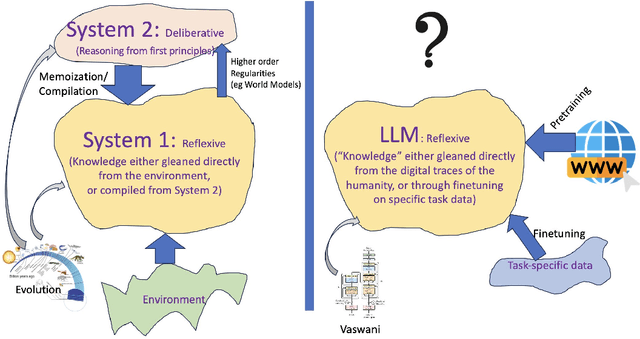
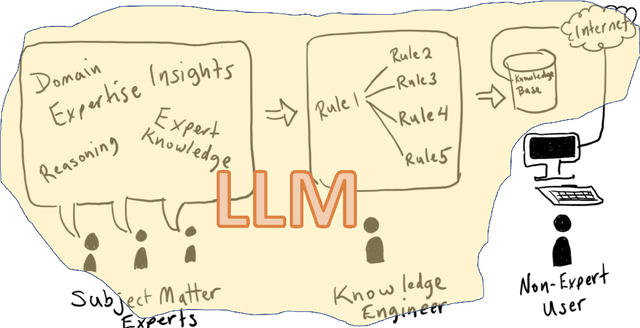
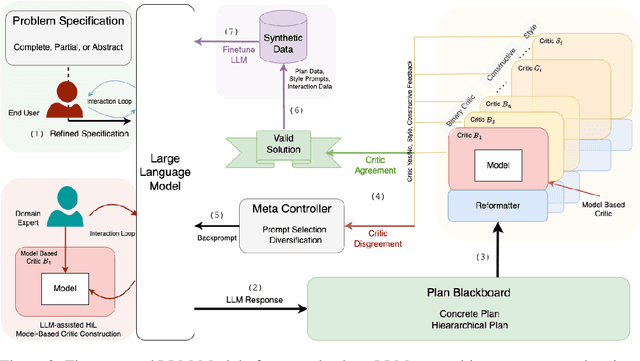
Abstract:There is considerable confusion about the role of Large Language Models (LLMs) in planning and reasoning tasks. On one side are over-optimistic claims that LLMs can indeed do these tasks with just the right prompting or self-verification strategies. On the other side are perhaps over-pessimistic claims that all that LLMs are good for in planning/reasoning tasks are as mere translators of the problem specification from one syntactic format to another, and ship the problem off to external symbolic solvers. In this position paper, we take the view that both these extremes are misguided. We argue that auto-regressive LLMs cannot, by themselves, do planning or self-verification (which is after all a form of reasoning), and shed some light on the reasons for misunderstandings in the literature. We will also argue that LLMs should be viewed as universal approximate knowledge sources that have much more meaningful roles to play in planning/reasoning tasks beyond simple front-end/back-end format translators. We present a vision of {\bf LLM-Modulo Frameworks} that combine the strengths of LLMs with external model-based verifiers in a tighter bi-directional interaction regime. We will show how the models driving the external verifiers themselves can be acquired with the help of LLMs. We will also argue that rather than simply pipelining LLMs and symbolic components, this LLM-Modulo Framework provides a better neuro-symbolic approach that offers tighter integration between LLMs and symbolic components, and allows extending the scope of model-based planning/reasoning regimes towards more flexible knowledge, problem and preference specifications.
"Task Success" is not Enough: Investigating the Use of Video-Language Models as Behavior Critics for Catching Undesirable Agent Behaviors
Feb 06, 2024Abstract:Large-scale generative models are shown to be useful for sampling meaningful candidate solutions, yet they often overlook task constraints and user preferences. Their full power is better harnessed when the models are coupled with external verifiers and the final solutions are derived iteratively or progressively according to the verification feedback. In the context of embodied AI, verification often solely involves assessing whether goal conditions specified in the instructions have been met. Nonetheless, for these agents to be seamlessly integrated into daily life, it is crucial to account for a broader range of constraints and preferences beyond bare task success (e.g., a robot should grasp bread with care to avoid significant deformations). However, given the unbounded scope of robot tasks, it is infeasible to construct scripted verifiers akin to those used for explicit-knowledge tasks like the game of Go and theorem proving. This begs the question: when no sound verifier is available, can we use large vision and language models (VLMs), which are approximately omniscient, as scalable Behavior Critics to catch undesirable robot behaviors in videos? To answer this, we first construct a benchmark that contains diverse cases of goal-reaching yet undesirable robot policies. Then, we comprehensively evaluate VLM critics to gain a deeper understanding of their strengths and failure modes. Based on the evaluation, we provide guidelines on how to effectively utilize VLM critiques and showcase a practical way to integrate the feedback into an iterative process of policy refinement. The dataset and codebase are released at: https://guansuns.github.io/pages/vlm-critic.
Leveraging Pre-trained Large Language Models to Construct and Utilize World Models for Model-based Task Planning
May 24, 2023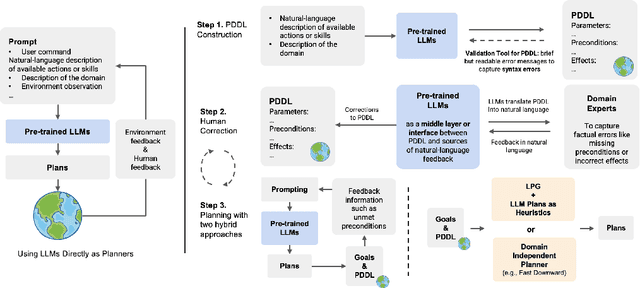

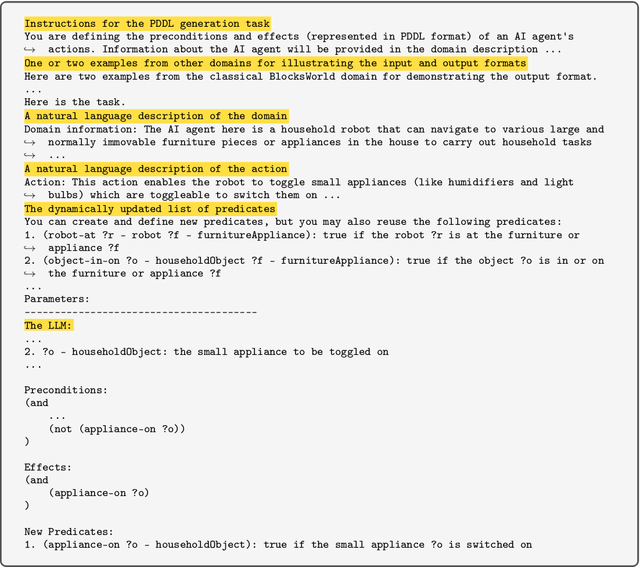
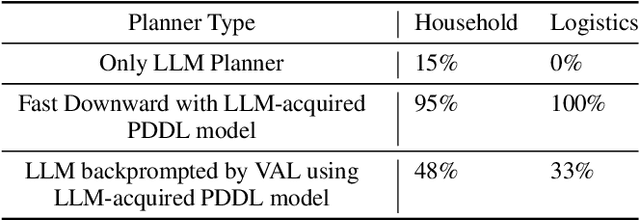
Abstract:There is a growing interest in applying pre-trained large language models (LLMs) to planning problems. However, methods that use LLMs directly as planners are currently impractical due to several factors, including limited correctness of plans, strong reliance on feedback from interactions with simulators or even the actual environment, and the inefficiency in utilizing human feedback. In this work, we introduce a novel alternative paradigm that constructs an explicit world (domain) model in planning domain definition language (PDDL) and then uses it to plan with sound domain-independent planners. To address the fact that LLMs may not generate a fully functional PDDL model initially, we employ LLMs as an interface between PDDL and sources of corrective feedback, such as PDDL validators and humans. For users who lack a background in PDDL, we show that LLMs can translate PDDL into natural language and effectively encode corrective feedback back to the underlying domain model. Our framework not only enjoys the correctness guarantee offered by the external planners but also reduces human involvement by allowing users to correct domain models at the beginning, rather than inspecting and correcting (through interactive prompting) every generated plan as in previous work. On two IPC domains and a Household domain that is more complicated than commonly used benchmarks such as ALFWorld, we demonstrate that GPT-4 can be leveraged to produce high-quality PDDL models for over 40 actions, and the corrected PDDL models are then used to successfully solve 48 challenging planning tasks. Resources including the source code will be released at: https://guansuns.github.io/pages/llm-dm.
TWIN: TWo-stage Interest Network for Lifelong User Behavior Modeling in CTR Prediction at Kuaishou
Feb 05, 2023Abstract:Life-long user behavior modeling, i.e., extracting a user's hidden interests from rich historical behaviors in months or even years, plays a central role in modern CTR prediction systems. Conventional algorithms mostly follow two cascading stages: a simple General Search Unit (GSU) for fast and coarse search over tens of thousands of long-term behaviors and an Exact Search Unit (ESU) for effective Target Attention (TA) over the small number of finalists from GSU. Although efficient, existing algorithms mostly suffer from a crucial limitation: the \textit{inconsistent} target-behavior relevance metrics between GSU and ESU. As a result, their GSU usually misses highly relevant behaviors but retrieves ones considered irrelevant by ESU. In such case, the TA in ESU, no matter how attention is allocated, mostly deviates from the real user interests and thus degrades the overall CTR prediction accuracy. To address such inconsistency, we propose \textbf{TWo-stage Interest Network (TWIN)}, where our Consistency-Preserved GSU (CP-GSU) adopts the identical target-behavior relevance metric as the TA in ESU, making the two stages twins. Specifically, to break TA's computational bottleneck and extend it from ESU to GSU, or namely from behavior length $10^2$ to length $10^4-10^5$, we build a novel attention mechanism by behavior feature splitting. For the video inherent features of a behavior, we calculate their linear projection by efficient pre-computing \& caching strategies. And for the user-item cross features, we compress each into a one-dimentional bias term in the attention score calculation to save the computational cost. The consistency between two stages, together with the effective TA-based relevance metric in CP-GSU, contributes to significant performance gain in CTR prediction.
Relative Behavioral Attributes: Filling the Gap between Symbolic Goal Specification and Reward Learning from Human Preferences
Nov 16, 2022Abstract:Generating complex behaviors that satisfy the preferences of non-expert users is a crucial requirement on AI agents. Interactive reward learning from trajectory comparisons is one way to allow non-expert users to convey complex objectives by expressing preferences over short clips of agent behaviors. Even though this parametric method can encode complex tacit knowledge present in the underlying tasks, it implicitly assumes that the human is unable to provide richer feedback than binary preference labels, leading to intolerably high feedback complexity and poor user experience. While providing a detailed symbolic closed-form specification of the objectives might be tempting, it is not always feasible even for an expert user. However, in most cases, humans are aware of how the agent should change its behavior along meaningful axes to fulfill their underlying purpose, even if they are not able to fully specify task objectives symbolically. Using this as motivation, we introduce the notion of Relative Behavioral Attributes, which allows the users to tweak the agent behavior through symbolic concepts (e.g., increasing the softness or speed of agents' movement). We propose two practical methods that can learn to model any kind of behavioral attributes from ordered behavior clips. We demonstrate the effectiveness of our methods on four tasks with nine different behavioral attributes, showing that once the attributes are learned, end users can produce desirable agent behaviors relatively effortlessly, by providing feedback just around ten times. This is over an order of magnitude less than that required by the popular learning-from-human-preferences baselines.
Towards customizable reinforcement learning agents: Enabling preference specification through online vocabulary expansion
Oct 27, 2022Abstract:There is a growing interest in developing automated agents that can work alongside humans. In addition to completing the assigned task, such an agent will undoubtedly be expected to behave in a manner that is preferred by the human. This requires the human to communicate their preferences to the agent. To achieve this, the current approaches either require the users to specify the reward function or the preference is interactively learned from queries that ask the user to compare trajectories. The former approach can be challenging if the internal representation used by the agent is inscrutable to the human while the latter is unnecessarily cumbersome for the user if their preference can be specified more easily in symbolic terms. In this work, we propose PRESCA (PREference Specification through Concept Acquisition), a system that allows users to specify their preferences in terms of concepts that they understand. PRESCA maintains a set of such concepts in a shared vocabulary. If the relevant concept is not in the shared vocabulary, then it is learned. To make learning a new concept more efficient, PRESCA leverages causal associations between the target concept and concepts that are already known. Additionally, the effort of learning the new concept is amortized by adding the concept to the shared vocabulary for supporting preference specification in future interactions. We evaluate PRESCA by using it on a Minecraft environment and show that it can be effectively used to make the agent align with the user's preference.
Leveraging Approximate Symbolic Models for Reinforcement Learning via Skill Diversity
Feb 06, 2022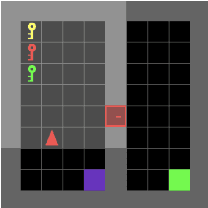

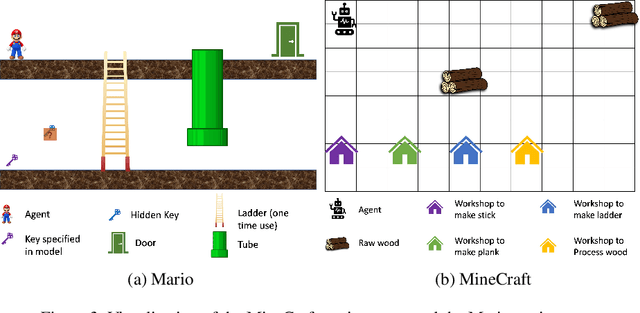
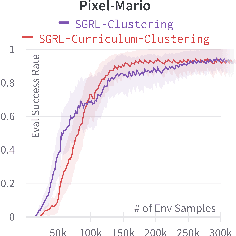
Abstract:Creating reinforcement learning (RL) agents that are capable of accepting and leveraging task-specific knowledge from humans has been long identified as a possible strategy for developing scalable approaches for solving long-horizon problems. While previous works have looked at the possibility of using symbolic models along with RL approaches, they tend to assume that the high-level action models are executable at low level and the fluents can exclusively characterize all desirable MDP states. This need not be true and this assumption overlooks one of the central technical challenges of incorporating symbolic task knowledge, namely, that these symbolic models are going to be an incomplete representation of the underlying task. To this end, we introduce Symbolic-Model Guided Reinforcement Learning, wherein we will formalize the relationship between the symbolic model and the underlying MDP that will allow us to capture the incompleteness of the symbolic model. We will use these models to extract high-level landmarks that will be used to decompose the task, and at the low level, we learn a set of diverse policies for each possible task sub-goal identified by the landmark. We evaluate our system by testing on three different benchmark domains and we show how even with incomplete symbolic model information, our approach is able to discover the task structure and efficiently guide the RL agent towards the goal.
MuSCLe: A Multi-Strategy Contrastive Learning Framework for Weakly Supervised Semantic Segmentation
Jan 18, 2022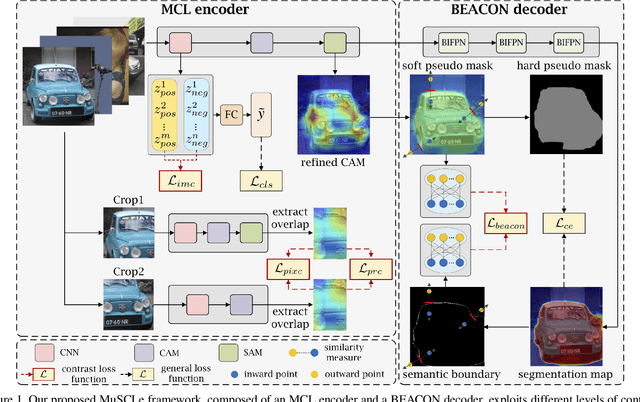
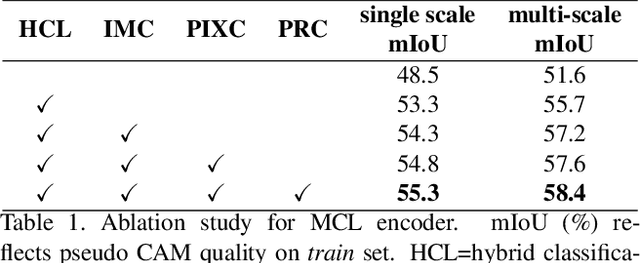
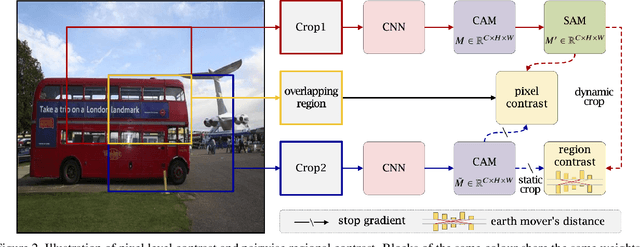
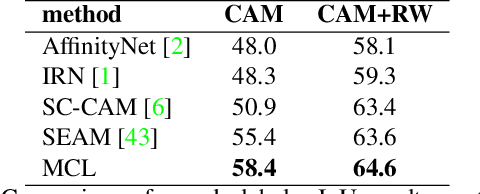
Abstract:Weakly supervised semantic segmentation (WSSS) has gained significant popularity since it relies only on weak labels such as image level annotations rather than pixel level annotations required by supervised semantic segmentation (SSS) methods. Despite drastically reduced annotation costs, typical feature representations learned from WSSS are only representative of some salient parts of objects and less reliable compared to SSS due to the weak guidance during training. In this paper, we propose a novel Multi-Strategy Contrastive Learning (MuSCLe) framework to obtain enhanced feature representations and improve WSSS performance by exploiting similarity and dissimilarity of contrastive sample pairs at image, region, pixel and object boundary levels. Extensive experiments demonstrate the effectiveness of our method and show that MuSCLe outperforms the current state-of-the-art on the widely used PASCAL VOC 2012 dataset.
 Add to Chrome
Add to Chrome Add to Firefox
Add to Firefox Add to Edge
Add to Edge